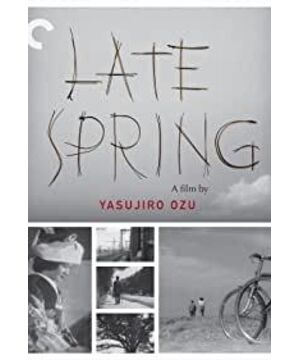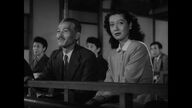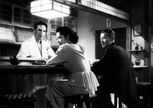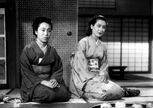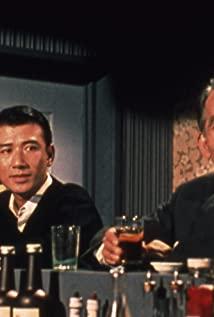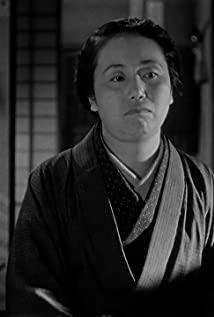Film Literature No. 22, 2010
Yasujiro Ozu (1903--1963) is a relatively famous Japanese film director. His film works are divided into two parts before and after the war with 1945 as the boundary. Part of the works before the war focused on expressing the warm human feelings of the common people in the narrow alleys; the other part was people who were distorted under the change of social structure. After the war, Ozu's works had a deeper thought. Just as Japanese film critics said, Ozu's films began to focus on the trend of the traditional relationship between people in modern society, and to explore people under the new relationship between people. of indifference, loneliness and helplessness. In 2003, the 100th anniversary of Ozu's birth and the 40th anniversary of his death, the Japanese literary and art circles made a series of retrospectives on Ozu's film works, and spoke highly of his artistic achievements.
The works of Yasujiro Ozu after the war, among which the earliest representative work is "Tokyo Story" (1953), almost one-jth of the pictures in the works are "ordinary daily life" L ". The author develops through these "ordinary daily life" The author's important themes—the position of "home" in El Ben's postwar society and culture and the traditions and changes of "family". Before the film "Tokyo Story", Ozu directed the film "Late Spring" (1949), "Family". "Sister Zongfang" (1950), "Maiqiu" (1951), and later "The Taste of Tea and Rice" (1952), gradually established a narrative style of capturing and writing "ordinary daily life". Therefore, some Japanese commentators The family called Ozu's film a "petty movie" and a "family drama".
The movie "Late Spring" tells the story of the changes in the family of only father and daughter. University professor Zhou Ji's wife is deceased, and her daughter has never considered marriage in order to take care of her father's daily life. The father hoped that his nearly 28-year-old daughter could get married as soon as possible, and persuaded her to go on a blind date; while the daughter JL Bei t] worried that once she got married and left her father, the father who could not wash and cook would be difficult to live without someone to take care of. So the father had to lie that he might be ready to continue the string, and the daughter finally agreed to go on a blind date. Before the daughter got married, the father and daughter traveled to Kyoto together. The daughter said that she hoped to be with her father forever, and the father persuaded her to start a new life. The marriage of the daughter means the beginning of a new family life, and it is also a breakdown of the family where the daughter originally lived. The father in the movie looks at his daughter wearing a bridal dress, with happiness in his eyes, and a trace of loss other than happiness. After the wedding, the father Zhou Ji returned home alone, and his clumsy hand slowly cut the apple. The last scene of the movie symbolizes the father's lonely life in his old age.
Although the movie "Late Spring" is a family story about a father and a daughter, there are many scenes that focus on Japanese traditional architecture, traditional culture and traditional art. For example, the Enjue Temple in Xiankura and the tea party in the temple, the Hase Buddha in Zenkura, the Somei Noh stage and the Noh music "Du Ruo" performed on the stage, the ancient temple Kiyomizu Temple in Kyoto, and the famous dry landscape garden Ryoan Temple in Kyoto. These live-action shots show the audience the representative traditional cultures of Japan since ancient times and the symbols of these cultures. The characters in the film are set against the ancient temples and temples, which is very different from Ozu's other film works, which use the residential alleys as the main background of the characters: some film critics say that the traditional cultural scene in this film is Ozu's post-war time in Japan. The turbulent times of , the gaze on the gradually forgotten "beauty of Japan"":,
At the beginning of the film is the picture of Beizangcang Station, then the mountain that embraces Pujue Temple and the temple as a whole, and then the Yuanjue Temple Garan (this should be a live shot, Beizangcang Station is just before the gate of Yuanjue Temple, The author once got off here and visited Yuanjue Temple). After that, the camera turned to the indoors - the tea room was preparing to hold the tea party, and several ladies in kimonos were sitting here waiting for the start of the tea party. At this time, a young and beautiful woman came quietly. She was the heroine of the movie, Kiko. Kiko first put her hands on the tatami and bowed down to each of the ladies. Greetings; then, several ladies sat together and watched the tea master ordering tea. The tea room, paintings, tea utensils and tea lovers constitute an elegant and calm toilet surface. In the middle, the camera turns to the quaint buildings outside the tea room twice.
Zangcang Enjue Temple was founded in the fifth year of Hongan (1282) in Japan. The ninth-generation ruler of the Zancang shogunate, Hojo Tokizong, invited Wuxuezu Yuan Zen Master from China to create it. It is an important temple in the history of Buddhism and culture in Japan. . The architecture of Buddhist temples and Buddhist fine arts in the Chancang era created a new style. Among them, the most famous is the Canggu Buddha in Xiancang, and the most representative is the woodcut statue with crisp lines. And the national treasures such as Tang paintings and Song porcelains in Yuanjue Temple have always been the topic of scholars and writers. At the beginning of the movie "Late Spring", the camera was aimed at the ancient temple of Chancang, which shows what director Ozu wants to show. Under the relaxed and long music, a group of beautiful shots are displayed on the screen - the ancient and quiet temple Garan, the beautiful women in kimono, and the tea is ordered calmly. It is almost impossible to believe that the scene in the lens is actually Japan in 1949. Worry-Free Paper Network www.wypaper.com
In 1949, the fourth year after Japan's defeat in the war, in Tokyo and other big cities, the ruins of artillery fire can still be seen everywhere; the streets are untidy and food is scarce. At that time, there was a popular saying in the folk called "the life of peeling bamboo shoots", which refers to the embarrassment of a housewife selling her own food and food one by one in exchange for food for the whole family's livelihood. The scene of the tea party at Yuanjue Temple in the movie "Late Spring". At that time, it should have been a self-cultivation course for middle-class leisure women, but it was by no means the "ordinary daily life" of ordinary people that was often shown in Xiaolu's films later. The first series of shots in "Late Spring" prominently displayed to the audience a peaceful and traditional picture that people had long lost because of the war for more than ten years.
The protagonist of the movie "Late Spring" is a university professor who lives in Beizangcang. This may be a condition designed for the purpose of shooting the shot of Bei Zangcang Yuanjue Temple. In fact, Enkakuji Temple is not only the crystallization of the society, religion and culture of Japan's Kamakura period, but also the place where many Japanese literati seek spiritual and cultural homes since modern times. The literati may go to visit, in order to see the treasures hidden in the temple. Or enter the temple to sit in meditation for spiritual stability or sublimation. For example, the thinker Suzuki Dazhuo and the writer Natsume Soseki are all closely related to the Zenkura Enkakuji Temple. The novelist Akutagawa Ryunosuke also wrote about the anecdotes of Enkakuji Temple and the performance of the eminent monk Shizong of Enkakuji Temple at that time. After the war, Kawabata Yasushi lived near Yuanjue Temple. Kawabata also described the story of a professor and his daughter who lived in Kitakura in his novel "The Dancer". Yasujiro Ozu lived near Jingzhi Temple in Zangcang in his later years. It is said that the movie "The Flower of the Other Side" (1958) was named after the blooming flowers of the other side in Yingsheng Temple in Zangcang, and there are also actual shots in Yingsheng Temple in the movie. . It can be seen that Ozu has a preference for the ancient temple of Zancang. In the movie "Late Spring", Enjue Temple, which first appeared on the camera, is the resting place of Yasujiro Ozu. "1
Corresponding to Noriko's tea party scene in the film is the scene of the father and daughter watching the Noh stage performance. The stage in the film is the Noh music "Du Ruo", which is a world-renowned music audience. Although it is only in the film In the performance of a scene, the list of Noh actors is printed on the subtitles of the film's cast list one by one according to the roles played on the stage, which shows the artistic popularity of Noh actors at that time. On the stage, the screen moves back and forth, but the sound of the movie has always been the accompaniment and soundtrack of "Du Ruo".
"Duruo" in Japanese is pronounced "KAKITSUBATA", which is an aquatic flower that blooms in early summer every year. The song "Du Ruo" on the Noh stage is named after the story of "The Eight Bridges of Three Rivers" in the ninth paragraph of the Japanese classical literature "Ise Monogatari". The story of "Ise Monogatari" tells the story of a certain man who is good at waka (one said, referring to the real person in history in the original industry) from Kyoto, traveling eastward, passing by a place called Mikawa (now Japan) on the way. Eastern Aichi Prefecture), the group decided to take a break in the water marshland "Yachibashi" with many tributaries. At this time, the Du Ruo flower was in full bloom in the water marsh, and the people accompanying him asked the hero to compose a waka with Du Ruo's flower name. So the protagonist used the five syllables of Du Ruohua's flower captain K/TSUBATA as the beginning of each sentence, and sang a wonderful waka, which made everyone sigh.
Taking the flower name "Du Ruo" in the story of "Ise Monogatari" as the title, "Du Ruo" on the Noh stage shows the experience of a traveling monk several years after "Ise Monogatari": a traveling monk, All the way to the Mikawa where the protagonist of "Ise Monogatari" once sang a waka with the title of Doruka. At this time, it happened to be the season when the flowers were in full bloom. The traveling monk happened to meet a village girl on the side of the Yaqiao Bridge, where he was enjoying the flowers. ,The village girl told the traveling monk about the fate of the former Zaiyuan Yeping (a famous ancient Japanese singer, said to be the protagonist of "Ise Monogatari", Zuoyou Waka "Du Ruo") and Du Ruohua here. Later, the village girl admitted that she was the flower essence of Du Ruohua under the questioning of the traveling monk. Then Hua Jing danced and danced a story from "Ise Monogatari".
The shooting scene of the Noh stage performance in the movie "Late Spring" was the famous "Somei Noh Stage" at that time. The stage was originally built in 1875 in Negishi, Tokyo, for open-air performances. Later in 1919, it was moved to Somei (now Toshima Ward, Tokyo), and the stage was set up indoors, similar to a theater. In 1949, when the movie "Late Spring" was filmed, the Somei Noh stage remained intact because it escaped the fire of war, so there were often Noh performances of various genres. (The theater and stage were dismantled in 1965, and the dismantled part of the stage was donated to Yokohama Noh Theater.) Stage J 2 in the movie, the Noh actor who played Doroka Jing, was the second heirloom of the Kansai Liu Mei School. On behalf of Mei Ruo Mantaro.
In the movie "Late Spring", the father and daughter are sitting in the front row of the tatami seats. The father holds the script in his hand and occasionally glances at it, as if to confirm the lyrics on the stage. The stage seen in the movie is the scene where Du Ruohua is dancing. In the first half of the show, the actors dressed as village girls have changed into their farm clothes and dressed up as aristocrats in Kyoto during the dynasty. The flower essence wears a crown on her head and wears a mask to dance slowly, telling the ancient waka's function of saving the world and the sacredness of the supremacy of art. The traveling monk sat on the side of the stage sing-along, and seemed to be listening to the narration of the flower essence. At this time, her daughter Noriko, who was watching the Noh stage performance, noticed that her father had nodded to a woman in the auditorium in the distance, and the woman was a middle-aged widowed woman who her aunt wanted to introduce to her father to continue the string. After the father nodded to the woman, he concentrated on watching the performance on the stage, but the daughter had no interest in watching it. into his own mind. In this scene, the characters in the movie don't have a single line, only the rhythm of the backing drum and the low-pitched vocals on the stage. In 7 minutes, the subtlety of traditional art on the stage and the subtle movements of the characters off the stage were all displayed very naturally and meticulously.
Noh is a traditional Japanese art and an intangible cultural heritage of Japan. For performances on the Noh stage, the leading actors wear special masks, and there are bands and backing vocals on the side of the stage. There are many repertoires based on Japanese classical literature. The film director Ozu seems to like the masks on the Noh stage. Mr. Kasa Chijo, the actor who played the role of his father in the movie "Late Spring", recalled in an interview in his later years that when he starred in Ozu's film "The Father is Here" (1942), Ozu asked him to "please perform according to Nomen, in my You don't need expressions in your works, you need to be expressionless" [4J. In fact, there are many kinds of masks on the Noh stage, each of which expresses the mission heart and personality of a certain character in the play. The "no expression" that Ozu said should be referring to the artificial expression that does not want an actor. In the movie "Late Spring", the masquerade dance of the flower essence on the Noh stage. It can be said that the performance comes with rich expressions under the mask and expressionless.
The second half of the film is the scene where the daughter who decides to get married accompanies her father on a trip to Kyoto. The famous cultural landscape of the ancient capital - Kiyomizu Temple in Higashiyama, Kyoto, with a wooden structure Buddhist hall (commonly known as "The Kiyomizu Temple Stage") hangs on the cliff. ”), a garden of dry landscapes in the shape of sand and stone at Ryoan Temple. These two places can be said to be the most representative historical and cultural buildings. Kiyomizu-dera Temple is a famous temple in ancient Japan, and the name of Kiyomizu-dera Temple appears in many classical literary works. The Buddhist hall of the temple was originally built in AD 798, and later developed into a temple complex; Long'an Temple was originally a villa for aristocrats, and was changed to a Zen temple in 1450. In 1488, the abbot and various halls were built. The garden on the south side of the abbot is the famous dry landscape sandstone garden. According to research, the garden was built in the mid-15th century, and the garden was paved with sand and stone, with five groups of stones to represent the ocean, islands and mountains. The father in the movie sits under the eaves of the abbot and stares at the dry landscape garden in front of him. The figure of the old man is like a black silhouette. Beyond the vicissitudes of life, the abstracted infinite landscape in the garden may be the eternity that Ozu wants to express.
Notes:
①Ozu lived in Xiancha for 11 years. 49 to 60 years old. On its tombstone, there is only one word "搐" engraved on it.
[References]
[1] [Japan] Sifang Tian Inuhiko. 100 Years of Japanese Film [M]. Wang Zhongyi, translated. Beijing: Beijing Life·Reading·Xinzhi Sanlian Publishing House, 2006.
[2] Donald Richie. The Problem of Home: Yasujiro Ozu - Japan in the Image [J]. Chinese Literature, 1977 (supplementary issue).
[3] Takahashi rule. Ozu Yasujiro's three works [J]. Women's Pictorial, 2000 (ot).
[4] Nakano Tsui. Love Ozu / 17 / The story of Kasa Zhizhong [J]. CHIKUMA. 2006 (10).
[5] Pan Jun. Japanese Garden Art and Ryoan Temple Stone Garden [A]. Japanese Studies: The sixth series [c]. Beijing: Peking University Press, 1996.
Source: http://www.wypaper.com/lunwen/dsdy/1111911IAB.html
View more about Late Spring reviews


